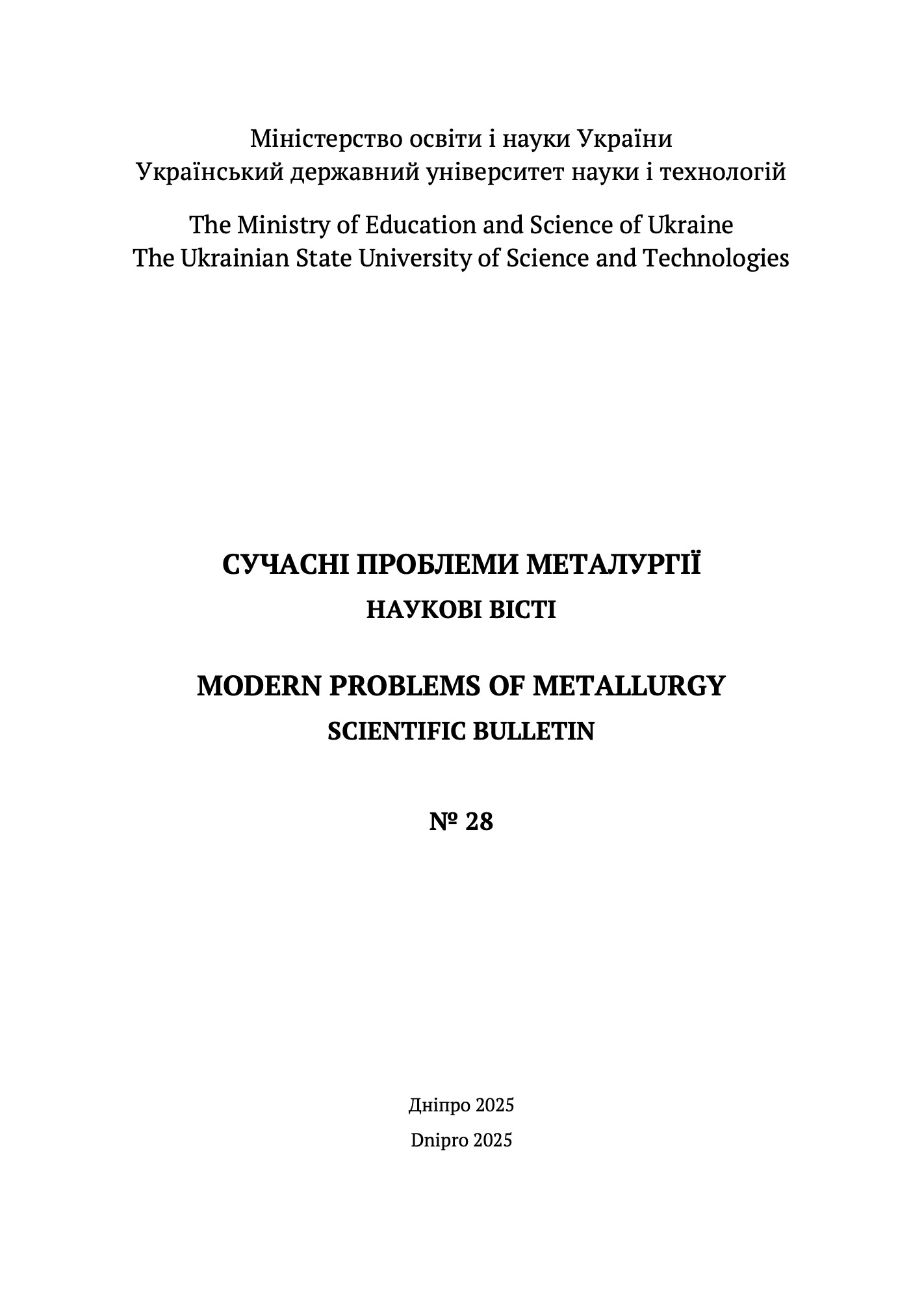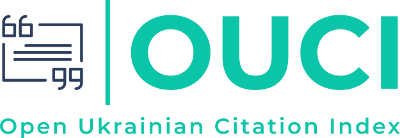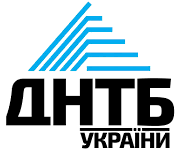GENERAL PRINCIPLES OF ENERGY CONSUMPTION IN THE METALLURGICAL INDUSTRY
DOI:
https://doi.org/10.34185/1991-7848.2025.01.14Keywords:
energy consumption, metallurgy, energy efficiency, decarbonization, hydrogen, electric arc furnace, Industry 4.0, CCUS.Abstract
The aim of the study is to explore the theoretical foundations for improving energy consumption efficiency in the metallurgical industry under the conditions of global climate policy challenges, production transformation, and the need to reduce energy costs. The paper analyzes the main technological processes, the level of energy intensity in the industry, as well as international experience in implementing energy-efficient solutions. The methods. The research is based on an interdisciplinary analysis of scientific sources, industry reports, statistical data, and the techno-economic characteristics of steel production. Methods of comparative analysis of energy consumption for various technological routes and a systematic approach to assessing innovation potential are applied. Findings. It has been established that a significant portion of energy consumption is concentrated in blast furnace–converter processes. The transition to electric arc furnace (EAF) production, the implementation of hydrogen metallurgy, the use of secondary raw materials, and digital technologies (Industry 4.0) open up opportunities for a substantial increase in energy efficiency. Examples of successful modernization at enterprises in various countries are provided The originality. The study systematizes the factors that determine the energy intensity of production processes, reveals the relationship between technological changes and energy consumption structure, and substantiates the need for a comprehensive approach to the transformation of the industry Practical implementation. The results can be used for strategic planning of enterprise modernization, development of energy-saving investment projects, and the formation of national industrial decarbonization policies.
References
IEA (2020), Monthly Electricity Statistics, IEA, Paris, Available at: https://www.iea.org/reports/monthly-electricity-statistics
Swalec, C. (2022) Pedal to the Metal 2022. It’s not too late to abate emisssions from the global iron and steel sector. San Francisco, CA, United States of America: Global Energy Monitor. Available at: https://globalenergymonitor.org/wp-content/uploads/2022/06/ GEM_SteelPlants2022.pdf
Swalec, C. and Shearer, C. (2021) Pedal to the Metal 2021. No time to delay decarbonizing the global steel sector, Global Energy Monitor. San Francisco, CA, United States of America: Global Energy Monitor. doi:10.7551/mitpress/11314.003.0023
Calvin, K., Pereira, J.C. de O. de P., Oreane Edelenbosch Johannes Emmerling, S.F., et al. (2018) ‘SPECIAL REPORT Global Warming of 1.5 oC Chapter 2 Mitigation Pathways Compatible with 1.5°C in the Context of Sustainable Development’, IPCC special report Global Warming of 1.5 oC, p. 82pp. Available at: https://www.ipcc.ch/site/ assets/uploads/sites/2/2019/02/SR15_
Davis, S.J., Lewis, N.S., Shaner, M., et al. (2018) ‘Net-zero emissions energy systems’, Science, 360(6396). doi:10.1126/science.aas9793.
Boehm, S., Lebling, K., Levin, L., et al. (2021) State of Climate Action 2021: Systems Transformations Required to Limit Global Warming to 1.5°C. Washington, DC: World Resources Institute. doi:10.46830/ wrirpt.21.00048.
Boehm, S., Jeffery, L., Levin, K., et al. (2022) State of Climate Action 2022. Berlin, Germany and Washington, D.C.: Bezos Earth Fund, Climate Action Tracker, World Resources Institute. Available at: https://www.wri.org/research/state-climate-action-2022 (Accessed: 2 November 2022).
Bashmakov, I.A., Nilsson, L.J., Acquaye, A., et al. (2022) ‘Industry’, in Climate Change 2022: Mitigation of Climate Change - Working Group III contribution to the Sixth Assessment Report of the Intergovernmental Panel on Climate Change. Intergovernmental Panel on Climate Change (IPCC). Available at: https://report.ipcc.ch/ ar6wg3/pdf/IPCC_AR6_WGIII_FinalDraft_FullReport.pdf.
Bataille, C., Åhman, M., Neuhoff, K., et al. (2018) ‘A review of technology and policy deep decarbonization pathway options for making energy-intensive industry production consistent with the Paris Agreement’, Journal of Cleaner Production, 187, pp. 960–973. doi:10.1016/j.jclepro.2018.03.107
Holappa, L. (2020). A General Vision for Reduction of Energy Consumption and CO2 Emissions from the Steel Industry. Metals, 10(9), 1117. https://doi.org/10.3390/met10091117
Energy use in the steel industry. Available at:https://worldsteel.org/wp-content/uploads/Fact-sheet-Energy-use-in-the-steel-industry.pdf
V. Ahapova, “Ukrainian Metallurgy after February 24: Who Will Support the Atlas?” Available at: https://voxukraine.org/ukrayinska-metalurgiya-pislya-24-lyutogo-hto-pidstavyt-pleche-atlantovi
Global primary aluminum smelting energy intensity 2008-2021. Published by Statista Research Department, Dec 18, 2023. Available at: https://www.statista.com/statistics/1116216/aluminum-smelting-energy-intensity/
Na, Hongming, Jingchao Sun, Yuxing Yuan, Ziyang Qiu, Lei Zhang, and Tao Du. 2024. "Theoretical Energy Consumption Analysis for Sustainable Practices in Iron and Steel Industry" Metals 14, no. 5: 563. https://doi.org/10.3390/met14050563
D. Tymoshenko, V. Kukhar, and I. Volovnenko, “Comparison of Energy Consumption in Steel Production Using Obsolete Sintering–Blast Furnace and Open-Hearth Processes versus Modern Midrex H₂ Direct Reduction and Electric Arc Furnace Technology,” Metinvest Polytechnic Scientific Journal. Series: Technical Sciences, no. 2, pp. 49–54, 2024. [In Ukrainian]
H2FUTURE: decarbonising the steel industry with green hydrogen. By Claudia Patricolo.May 20, 2021 Available at: https://ceenergynews.com/hydrogen/h2future-decarbonising-the-steel-industry-with-green-hydrogen/
Kun He, Li Wang, A review of energy use and energy-efficient technologies for the iron and steel industry, Renewable and Sustainable Energy Reviews, Volume 70, 2017, Pages 1022-1039, ISSN 1364-0321,https://doi.org/10.1016/j.rser.2016.12.007.
Tolettini, L.; Di Maria, E. The Impact of Industry 4.0 on the Steel Sector: Paving the Way for a Disruptive Digital and Ecological Transformation. Recycling 2023, 8, 55. https://doi.org/10.3390/ recycling8040055
O. I. Teslenko and K. V. Taranets, “Impact of Low-Carbon Technological Transformation in the Ferrous Metallurgy Sector on Electricity Consumption,” Bulletin of Kherson National Technical University, no. 4, pp. 153–159, 2024. [In Ukrainian] DOI https://doi.org/10.35546/kntu2078-4481.2024.4.19
Monika Draxler èt al. Green Steel for Europe, Technology Assessment and Road mapping. 2021, 88 p. URL: https://www.estep.eu/assets/Projects/GreenSteel4Europe/GreenSteel_Publication/210308_D1-2_-Assessment_and_roadmapping_of_technologies_-Publishable-version.pdf
Tian Liang, Shanshan Wang, Chunyang Lu, Nan Jiang, Wenqi Long, Min Zhang, Ruiqin Zhang. Environmental impact evaluation of an iron and steel plant in China: Normalized data and direct/indirect contribution. Journal of Cleaner Production. 2020, Vol. 264, 121697. DOI: https://doi.org/10.1016/j.jclepro.2020.121697
The facts about steelmaking Stealmakers seeking Green steel. Available at: https://ieefa.org/sites/default/files/2022-06/steel-fact-sheet.pdf
Holappa, L. (2020). A General Vision for Reduction of Energy Consumption and CO2 Emissions from the Steel Industry. Metals, 10(9), 1117. https://doi.org/10.3390/met10091117
Steel makers fear deepening crisis from energy crunch as output halted. Available at: https://www.reuters.com/business/energy/steel-makers-fear-deepening-crisis-energy-crunch-output-halted-2022-09-23/
Gu, Yueqing, Wenjie Liu, Bowen Wang, Borui Tian, Xinyue Yang, and Chongchao Pan. 2023. "Analysis and Prediction of Energy, Environmental and Economic Potentials in the Iron and Steel Industry of China" Processes 11, no. 12: 3258. https://doi.org/10.3390/pr11123258
S. H. Kiiko, “Energy Consumption Planning in the Implementation of an Energy Saving Project Portfolio at a Metallurgical Enterprise Based on Predictive Adaptation,” Collection of Scientific Works of the Kharkiv National Air Force University, vol. 3(65), pp. 97–105, 2020. [In Ukrainian] DOI: 10.30748/zhups.2020.65.15
S. H. Kiiko, “Adaptive Management of Energy Saving Project Portfolios at a Metallurgical Enterprise,” Current State of Scientific Research and Technologies in Industry, no. 4(14), pp. 56–70, 2020. [In Ukrainian] DOI: https://doi.org/10.30837/ITSSI.2020.14.056
Downloads
Published
Issue
Section
License
Copyright (c) 2025 Modern Problems of Metallurgy

This work is licensed under a Creative Commons Attribution 4.0 International License.












